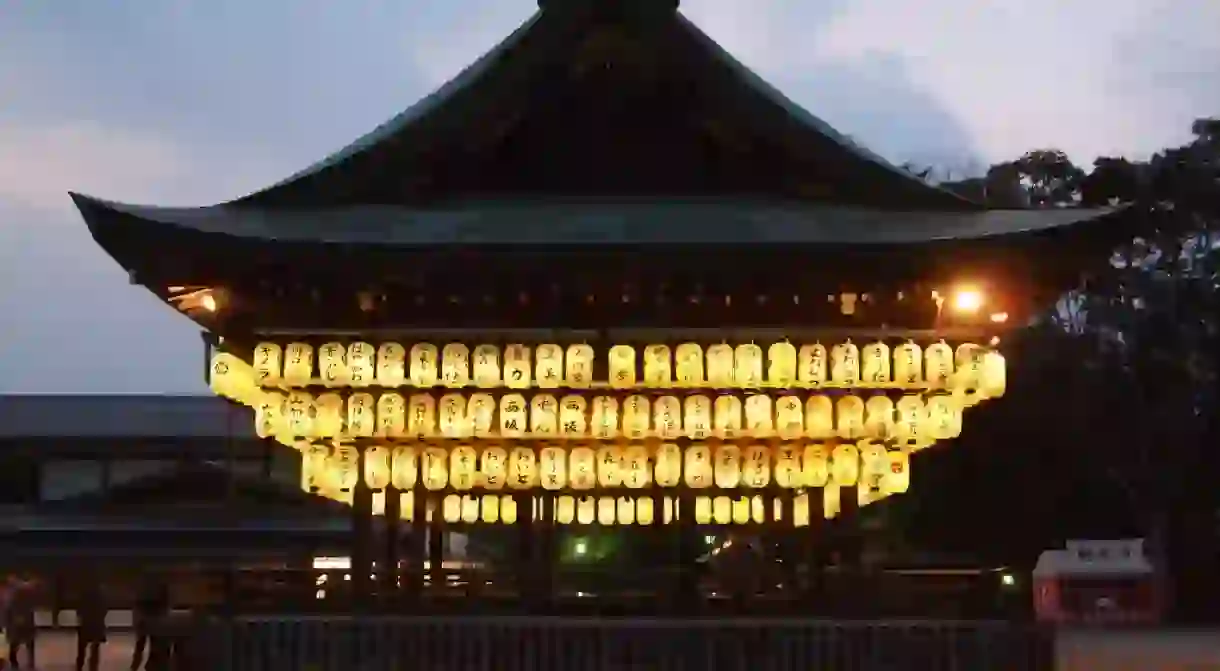How to Pray at a Japanese Shinto Shrine

Shinto shrines are a big part of everyday life in Japan. Although Japanese people tend not to be very religious, the country follows a mix of Buddhist and Shinto customs that have become ingrained in the normal day-to-day. One such practice is visiting a Shinto shrine to pray to the gods. If you have the opportunity to visit a Shinto shrine, here’s how to go about your visit.
Where to go
People in Japan typically visit shrines for a specific purpose, such as wishing for a family member’s speedy recovery from illness, or in the case of expectant mothers, praying for the safe delivery of their child.
Some shrines are associated with specific kami (deities), so visitors flock there en masse to seek the gods’s favor. For example, people may go to a shrine associated with Ebisu, the god of commerce, to pray for success in a business venture or a shrine associated with Tenjin, the god of scholarship, to ask for luck in passing their exams. Figure out what you are praying for and which god is reserved for that need before setting out to find a temple.

Purify before you pray
It’s important to be in good health when you visit a shrine, so as not to bring any ‘impurity’ with you. When you enter the shrine, you’ll find a water pavilion near the entrance called a temizuya for cleansing before you approach the gods. There may also be a large incense burner nearby for purifying with smoke.

Approach the haiden
The haiden is where you pay your respects to the kami-sama. Inside the hall, more complicated ceremonies are conducted by a Shinto priest, but you can pray from the outside. In front of the haiden is an offertory box called a ‘saisen-bako’. Approach the box, but avoid standing dead-center in front of it. This space is known as the ‘sei-chuu’, the passageway that the gods walk through.

Make an offering
Gently drop or toss an offering into the saisen-bako. You should avoid throwing your offering, though this may be difficult during the busy new year season when large crowds come to make the first shrine visit of the year, and you may have to stand further away from the offertory box. In this case, toss the money ‘respectfully’.
While it’s less about the amount of the offering than the sincerity of your prayers, superstition dictates that certain yen amounts bring good or bad luck. The five-yen coin is considered a good choice because it sounds like ‘go-en’, the Japanese word for luck (ご縁). The ten-yen coin, however, is considered unlucky despite being worth twice as much because it sounds like 遠縁 (‘tou-en’), which means that your luck will be far away, or as a Magic 8 Ball would say, ‘outlook not so good.’

Ring the bell
If there is a bell in front of the haiden, take hold of the rope with both hands and give it a firm shake to call the kami-sama. Traditionally, the ringing of the bell was believed to ward off evil spirits. So ringing also helps to purify the space for the kami-sama’s arrival.
Some shrines may not have a bell, or the bell may be tied away, in which case you can skip this step and make your prayer.

二礼二拍手一礼 (Two-two-one)
Two-two-one(二礼二拍手一礼)or ‘ni-rei, ni-hakushu, ichi-rei’ is a phrase that Japanese people use to remember the proper order for praying at a shrine. It means ‘two bows, two claps, one bow.’
First, greet the kami-sama by bowing deeply two times. Bend slowly and deliberately from the waist at a 90-degree angle, keeping your back straight.
Next, clap two times to express your appreciation to the kami-sama. Your hands should be raised about chest high and should open to about shoulder-width apart as you clap. When your palms come together, your right hand should be positioned just slightly below your left, as the left hand is said to represent the kami-sama, while the right hand represents the one praying, i.e. you. Clapping, like ringing bells, can also help to ward off evil spirits.
Then, offer your silent prayer to the kami-sama. If it’s your first visit to the shrine, you should tell the kami-sama your name and address (yes, really) and give thanks before proceeding with any special requests.
Although it may sound silly, the reason for this is that the kami-sama sometimes leaves its shrine in a special palanquin called a ‘mikoshi’. As worshippers carry the mikoshi through the neighborhood, the kami-sama recalls the people who have visited it at the shrine and sees who lives where. (Yes, really.)

Another reason is that the kami come together for a big ‘gathering of the gods’ each November to party at the Kamiari Festival held at Izumo Grand Shrine. So, if a particular kami has granted a wish for you or your family, it can chat about you with the resident kami of your neighborhood shrine. (Yes. Really.)
At the end of your prayer, excuse yourself with a final bow. Like before, it should be a deep 90-degree bow.
Exceptions
While the above is the usual way to pray at most Shinto shrines, some shrines have their own individual style of prayer, such as Ise Grand Shrine in Mie prefecture, the most important Shinto shrine in Japan, where priests follow the ceremonial pattern of ‘hachi-dohai, ya-hirade’ (八度拝八開手) or eight bows, eight claps.














